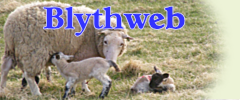William Morris and Blythburgh Church
The fabric of Blythburgh church was in a very bad condition in the late nineteenth century. The Bishop of Norwich closed the church in December 1881 because the roof was unsafe. Press reports were soon brought to the notice of the Society for the Protection of Ancient Buildings. It had been founded in 1877 by William Morris, George Wardle, his business associate, and the architect Philip Webb. They opposed the over–zealous restoration of medieval buildings, often involving virtual rebuilding, with the loss of original features and the use of inappropriate styles and finishes. The SPAB immediately sought details of the restoration plans drawn up for the local building committee by the architect George Edmund Street, and continued after his death in 1881 by his son Arthur. Webb visited the church in 1882 and prepared his own report for the Society.
The SPAB became extremely concerned about the restoration proposals, but their ability to influence the local committee was complicated by a public dispute between the incumbent, Henry Sykes, and the patron, Sir John Blois, over the latter's alleged responsibility for allowing the deterioration of the church, and his parsimony in response to the appeal for funds. The existence of a London Appeal Committee, formed in response to press reports, added further confusion. The parties debated ‘Preservation’ v ‘Restoration’ in the national and county press. By the spring of 1883 the SPAB was expressing grave disquiet at events. They were anxious for work to be stopped to give time for the consideration of its own proposals. Letters to the patron, Sir John Blois, and the Earl of Stradbroke pressed the Society's case. The London Committee felt unable to claim any right to interfere in the matter. Work appears to have progressed according to the local committee’s preferences.
Contact with Blythburgh was resumed in 1894, with a new incumbent Henry Oakes. No work was being done and funds were urgently needed. William Morris visited the church in July 1895, with F. Thackeray Turner, the SPAB’s secretary. They restated the rigorous SPAB position, including opposition to opening out any more windows, and urged that the south porch should be attended to without delay. When in 1902 the SPAB saw new proposals for restoration work they were ‘astonished and taken aback’. ‘We have not seen such drastic and thorough-going "restoration" advocated for many a year.’ Another bitter debate ensued. The Society did succeed in having the south porch repaired and not rebuilt. But the local committee insisted that overall the plans of its own architect and not the SPAB's should be followed. The SPAB would only endorse the work if it met its standards but an inspection in 1906 was extremely critical of priorities and techniques. With the expression of deep regret and disappointment, the SPAB disassociated itself from the work.
The Society had remained at odds with the local committee for twenty-five years. In spite of having the patron on its side, and being able to field noble allies in the persons of Queen Victoria’s daughter, Princess Louise, Duchess of Argyll, and Prince Frederick Duleep Singh, the SPAB was defeated by a determined local building committee. Although the avoidance of over-restoration at Blythburgh has sometimes been presented as a success for Morris and the SPAB, it may well be that it was shortage of funds that really stayed the hands of the restorers.
Alan Mackley, Blythburgh, April 1995
Back to the History Index
Some Favourite Websites For April 2025:
George Borrow Trust – Explore about the well travelled 1800s poet George Borrow
The George Borrow Trust aims to advance the education of the public in the life and works of George Borrow in particular, by means which preserve, exhibit and study his writings and works and other material objects connected with or tending to perpetuate his memory or to throw light on his life and work.
Walberswick Ferry – Offering river trips as well as special occassion bookings
Climb aboard the launch Daybreeze and follow the River Blyth towards Blythburgh through Walberswick Nature Reserve - an Area of Outstanding National Beauty.
Waveney Wholesale – Suppliers of toys, novelties, giftware, china, housewares, pet items, beach goods and so much more
Established Halesworth-based suppliers with over 3000 lines stocked. On-line ordering or call and collect.
Stoneware Birds – Life-sized handmade and unique British birds, now available to buy online.
A charming unique gift or a treat for oneself. See the website to know how each one is made. Now available to buy online. Each bird is an individual creation, varying in choice from the perky wren to the plump bullfinch together with other well-loved British birds. Which will you choose?
Andy Seedhouse Boats – Andy Seedhouse Boats, Woodbridge - Boat Sales
A friendly and professional family-run business with an old-fashioned approach to customer service, located on the picturesque waterfront at Woodbridge on the River Deben. From dinghies and day boats to fishing boats and yachts, and even including liveaboard boats too, Andy brings his many years of experience in helping his customers buy and sell. Also chandlery, trailers, etc.
